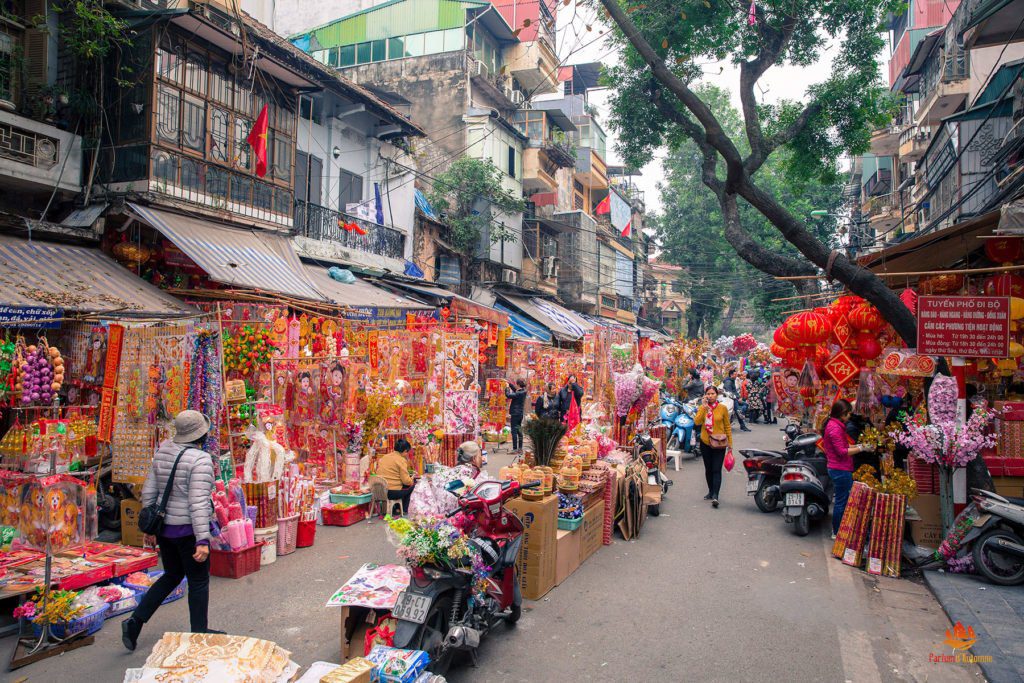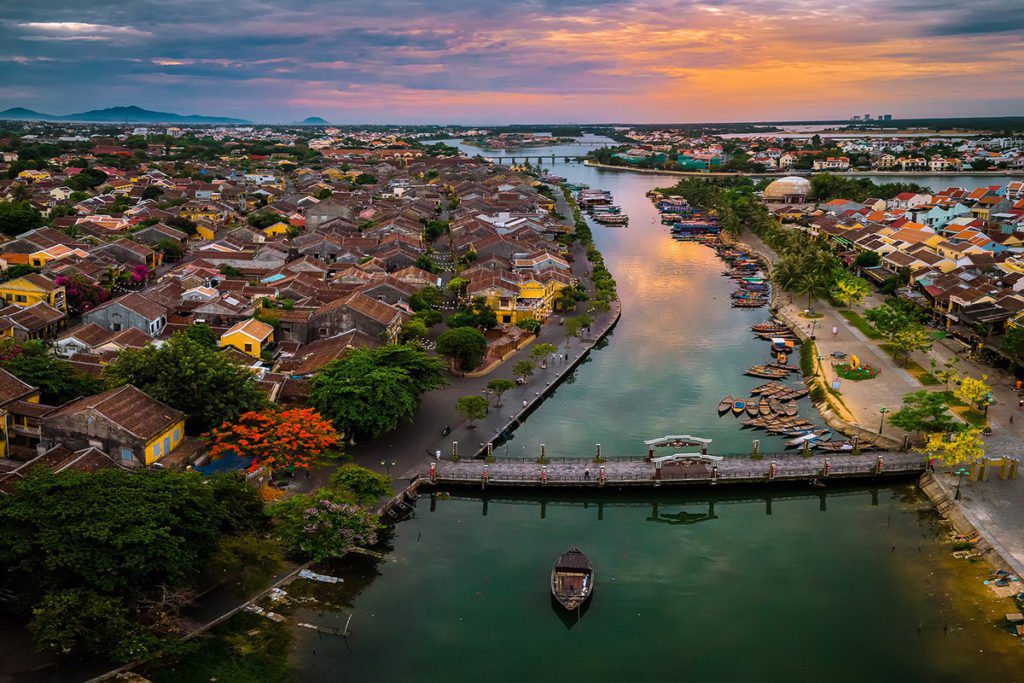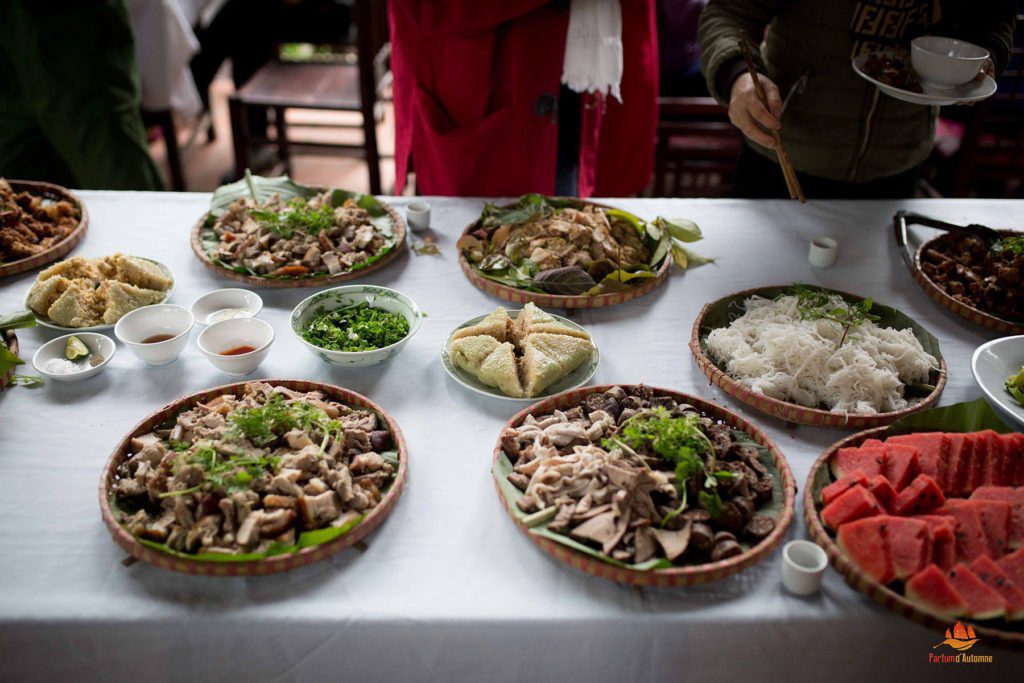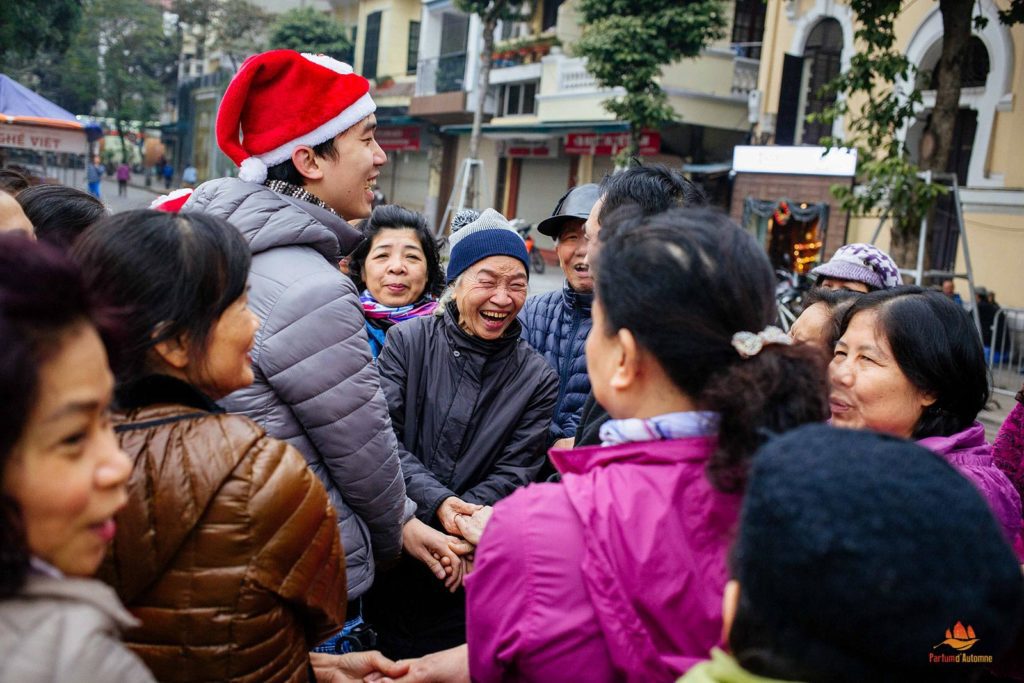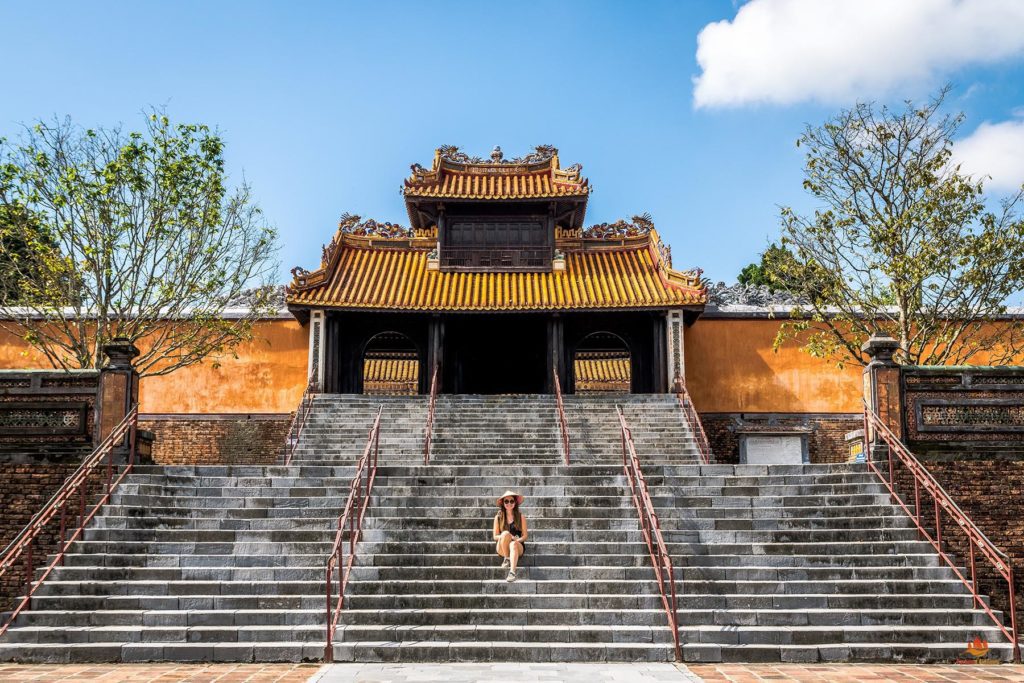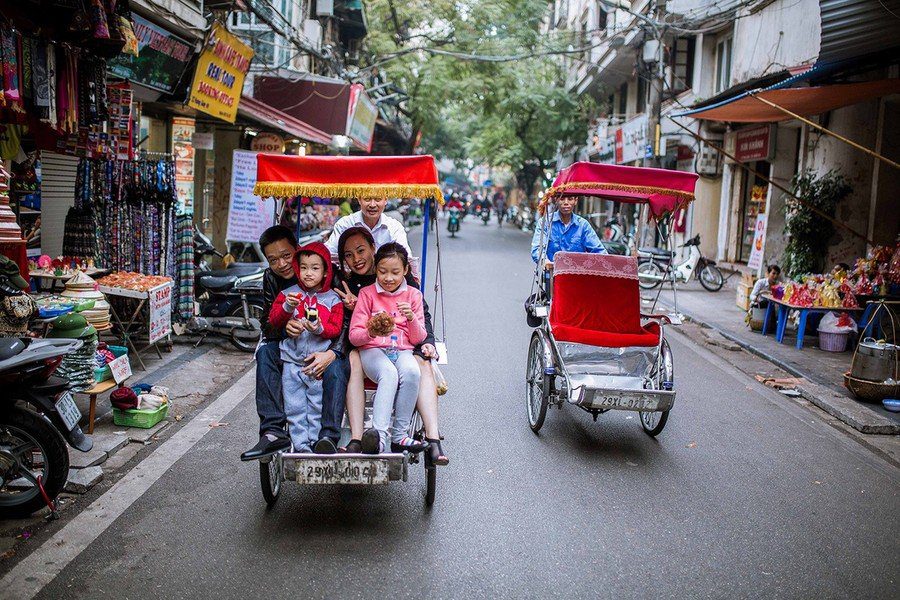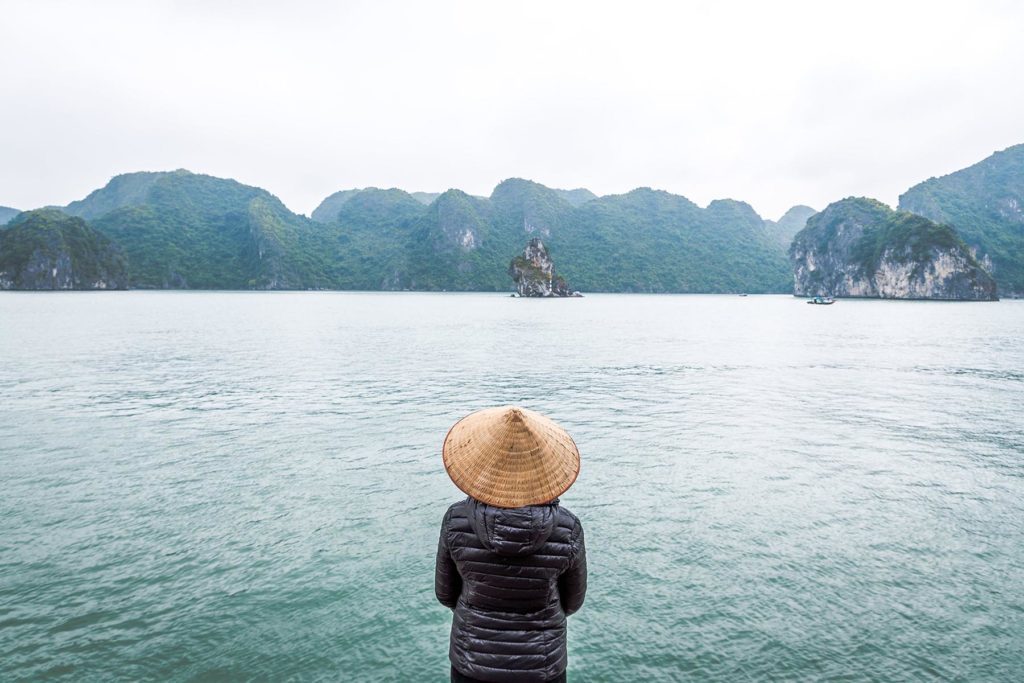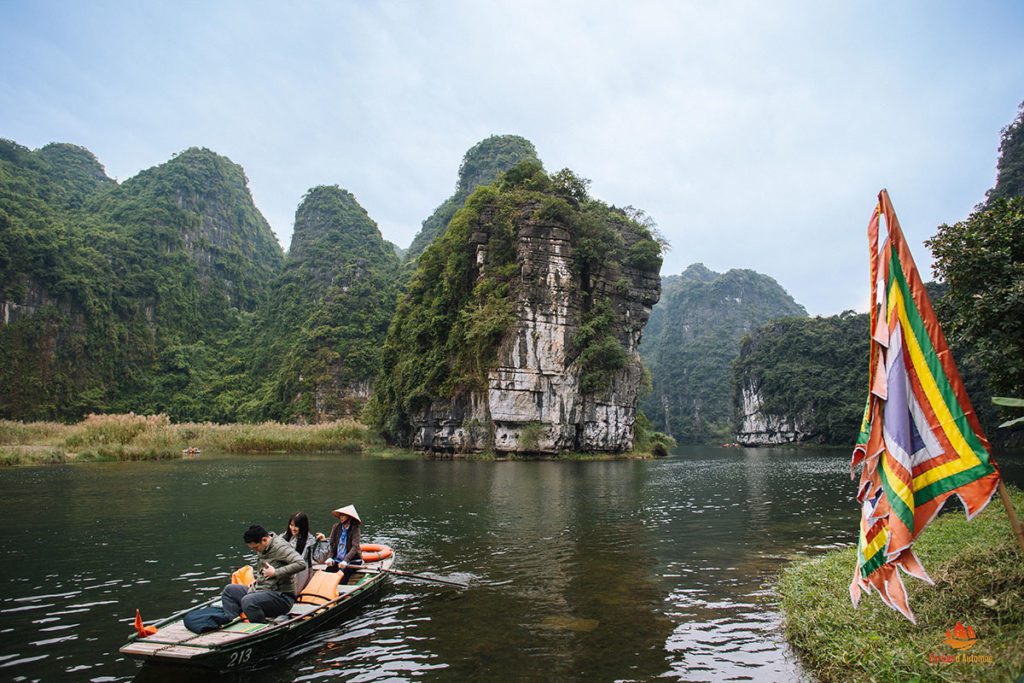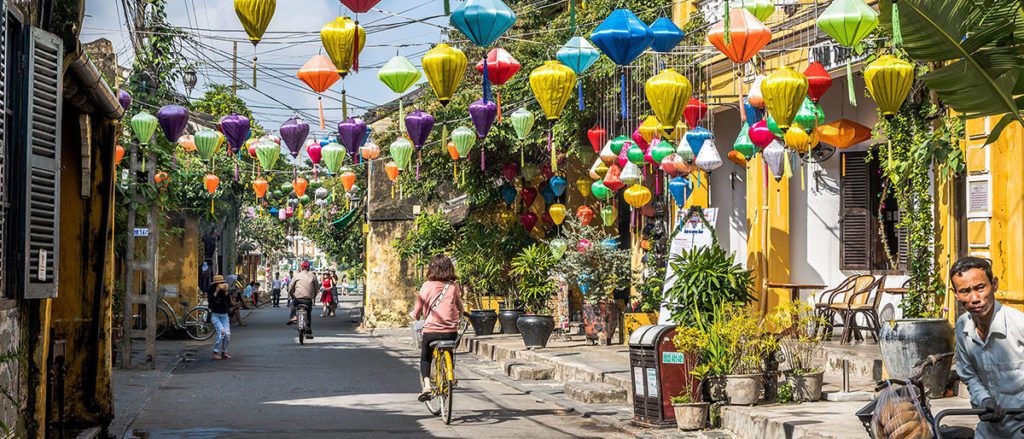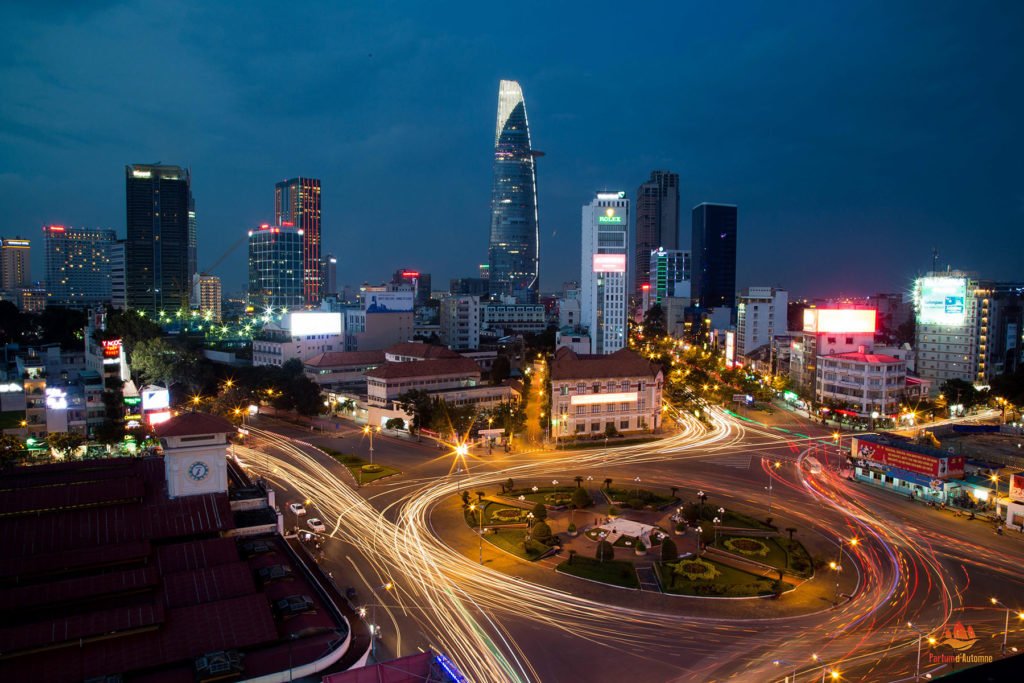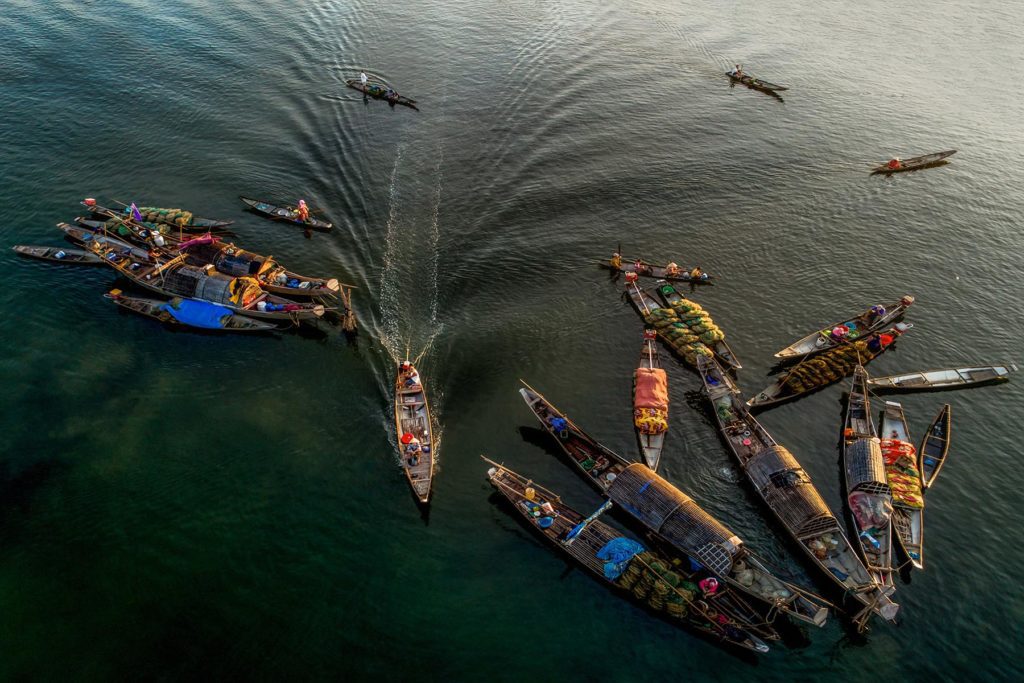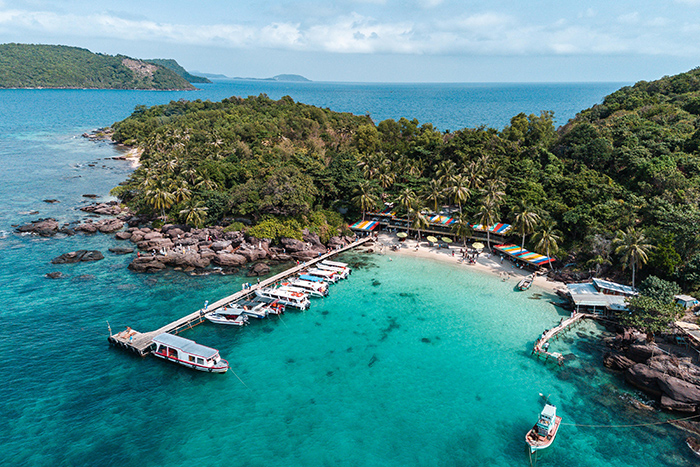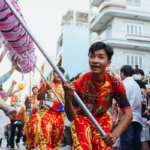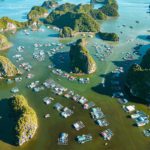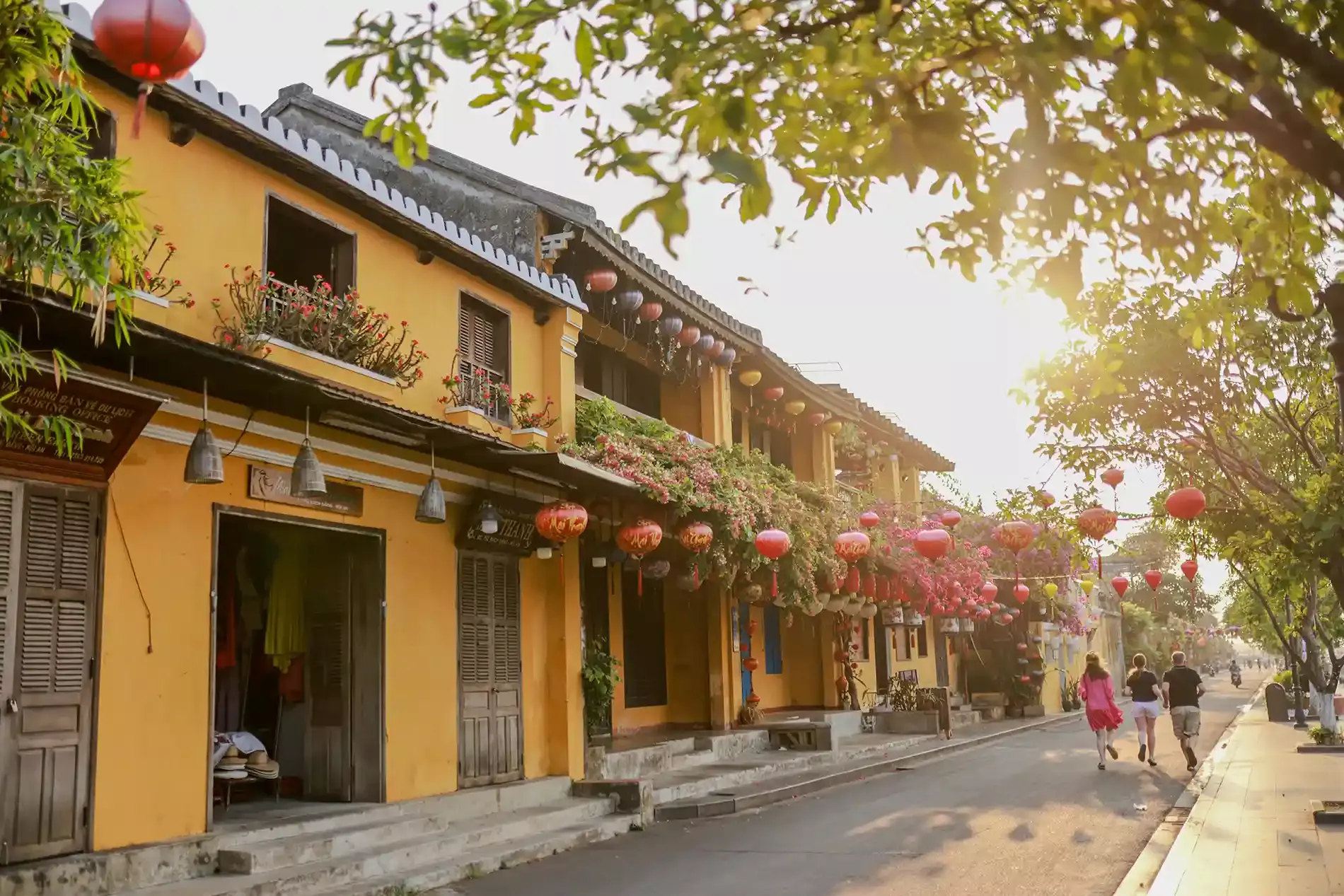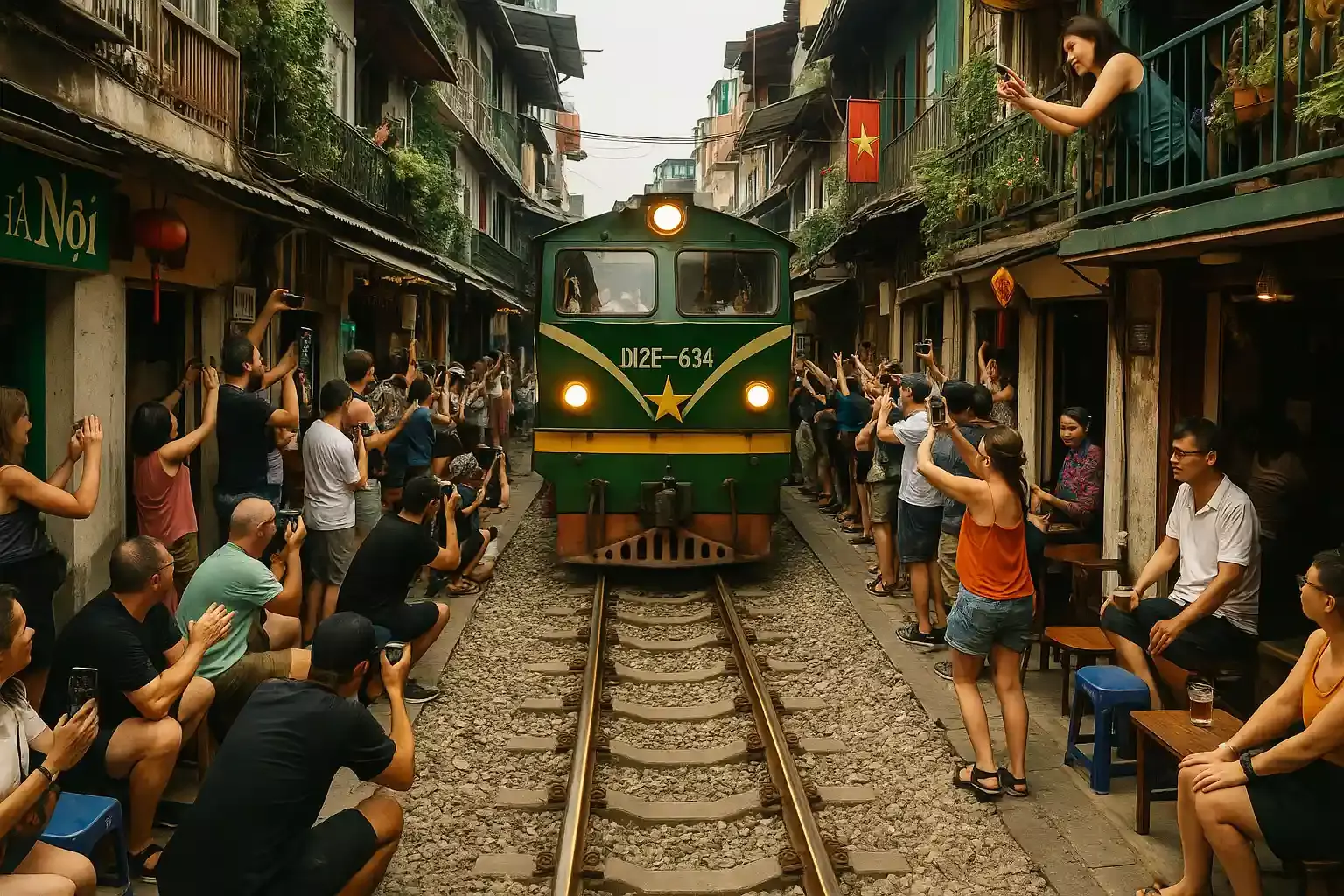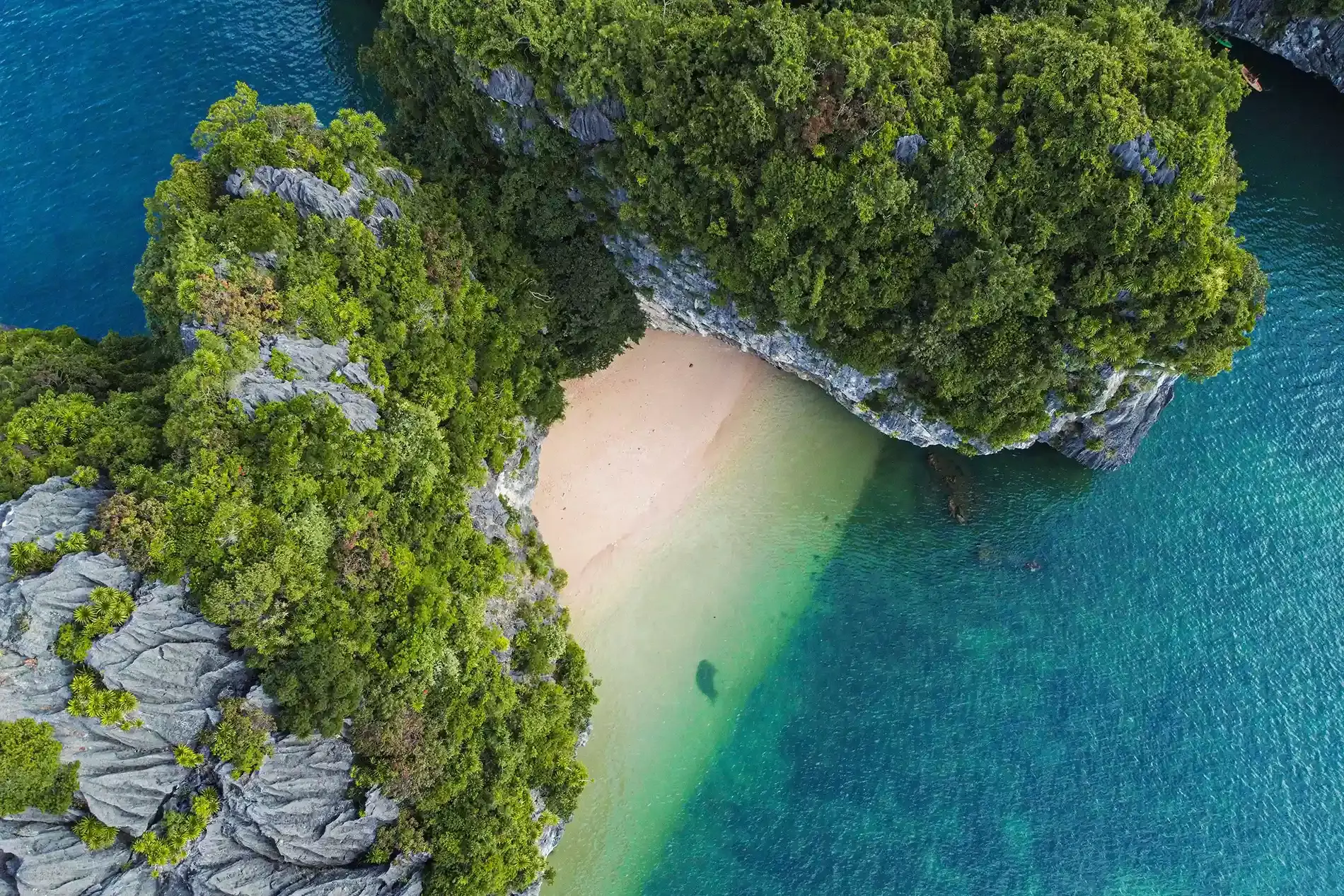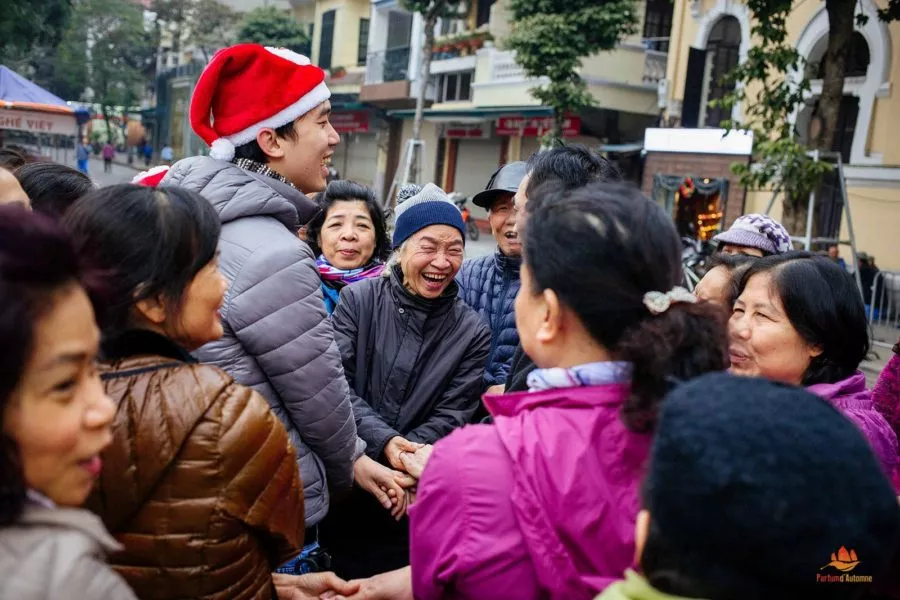
Traveling to Vietnam in January: all our tips to make the most of it
Are you considering a trip to Vietnam in January, but are not sure what to expect and which itinerary to choose? We’re here to help!
Below you will find all our advice on the weather and on the destinations to prioritize and avoid during your trip in January, which happens to be a cool and rainy period in the North, but very pleasant in the Central and Southern regions.
Do not hesitate to contact us to organize your stay in January!
Table des matières de l'article
Why travelling to Vietnam in January ?
In January in Vietnam, the frenzy of the end-of-year celebrations has subsided, but the cultural effervescence is still palpable, especially with the preparations for Tết, the Vietnamese Lunar New Year. Traveling in January offers a unique perspective on a country rich in traditions, landscapes, and experiences.
Here are the main reasons to travel in January :
Unique cultural experience during Têt
January is often the month preceding Tết, the Vietnamese Lunar New Year. It’s a time rich in preparations and cultural traditions. Travelers have the unique opportunity to see Vietnam in all its cultural splendor, with colorful decorations, special markets, and street celebrations. You will be able to witness traditional rituals, such as decorating houses with ‘Mai’ (plum flowers) in the North or ‘Đào’ (peach flowers) in the South, symbols of prosperity for the new year.
The colorful Hang Ma street in Hanoi before Têt. Photo : Mathieu Arnaudet
Less crowded
In January, the tourist flow is generally less dense compared to the following months. This allows visitors to discover popular sites without the crowds, offering a more peaceful and intimate experience. Fewer tourists also mean more opportunities for authentic interactions with locals, allowing for a true immersion in Vietnamese life.
Pleasant climate for outdoor activities
January offers a unique climatic diversity in Vietnam. The north is cool and sometimes foggy, ideal for hiking and exploring the mountains. The center and south enjoy a warmer and sunnier climate, perfect for visiting beaches and coastal towns. Whether it’s hiking in Sapa, cruising in Halong Bay, or cycling around Hoi An, the climate in January is generally conducive to a variety of outdoor activities.
Aerial view of Hoi An, Vietnam
Save money !
Traveling in the low season can be economical. Hotel rates, flight fares, and attraction prices are often lower in January, allowing travelers to enjoy excellent value for money. Some tourism service providers offer special deals or promotional packages during this off-peak period, which can be particularly appealing for budget-conscious travelers.
Diverse flavors
Vietnam is famous for its cuisine, and January offers the opportunity to taste special seasonal dishes, particularly those prepared for Tết. Visiting local markets in January also allows one to discover seasonal fruits and culinary specialties unique to this time of the year.
Banh chung in the middle, Têt speciality. Photo : Mathieu Arnaudet
What is the weather in Vietnam in January ?
The weather in Vietnam in January varies considerably from one region to another, adding to the richness of the travel experience.
Northern Vietnam
In the north, winter is in full swing with cooler temperatures, especially in mountainous regions like Sapa, where morning mists envelop the terraced rice fields, creating an almost mystical landscape. Hanoi, the capital, is cooler and drier, ideal for exploring its historic neighborhoods without the overwhelming heat of the summer months. Nevertheless, light rain is often present, so remember to equip yourself with umbrellas and warm, waterproof clothing.
Laugh yoga during winter in Hanoi. Photo : Mathieu Arnaudet
Central Vietnam
In central Vietnam, the cities of Hué and Hoi An experience a milder climate. It’s the perfect time to admire UNESCO World Heritage sites without the crowds. The mild weather is ideal for strolling through the colorful streets of Hoi An or exploring the ancient citadels of Hué.
Entrance of Emperor Tu Duc tomb, Hue, Vietnam
Southern Vietnam
Ho Chi Minh-City and the Mekong Delta enjoy a hot and sunny climate, perfect for exploring the floating markets and lush landscapes of this fertile region. It’s an ideal time to discover the bustling urban life of Saigon or embark on a culinary adventure, as Vietnam is renowned for its delicious and diverse street food. It’s also the perfect time to visit the islands, such as Phu Quoc or Con Dao.
Sao beach in Phu Quoc, Vietnam
How to prepare your trip to Vietnam in January ?
How to pack ?
Clothing for the North: As we’ve seen, the climate in northern Vietnam in January can be quite cold, especially in mountainous regions like Sapa. It’s advisable to bring warm clothes, including sweaters, jackets, scarves, and possibly a hat (if you plan to go to the mountains).
Clothing for the Central and Southern Regions: In these areas, the climate is milder and sometimes hot. Pack lightweight and comfortable clothing, ideal for the tropical weather. Don’t forget a hat and sunscreen to protect yourself from the sun.
As you can see, if you want to visit the country from North to South, you’ll need to adapt your clothing accordingly!
Travel documents needed
Passport and visa: Make sure your passport is valid for at least 6 months after your travel date. For French citizens, no visa is required for a stay of up to 45 days. For other French speakers, an e-visa will be required – see our article for detailed procedure.
Travel Insurance: It is highly recommended to purchase travel insurance covering medical emergencies, flights, and cancellations.
Health and security
Vaccinations: Consult your doctor for advice on vaccinations. Common vaccines include hepatitis A and B, typhoid, and yellow fever. However, for a short-term trip, we do not recommend such vaccinations.
First aid kit: Bring a first aid kit containing essential medications, bandages, disinfectant, etc. Don’t forget mosquito repellent for the southern part of the country.
Food and water precautions: Be cautious with tap water and raw foods. Consume bottled water and well-cooked foods.
Understand the local culture
Respect for traditions: Familiarize yourself with local customs, especially regarding Tet. It’s a period when certain practices and beliefs are particularly significant for Vietnamese people.
Language: Learning a few basic phrases in Vietnamese can greatly enhance your experience and help you connect with locals.
Preparing for Têt holidays
Understanding Tet: Familiarize yourself with Tet traditions as it can affect service hours, transportation, and store openings.
Participation in festivities: Look for local Tet events in the destinations you plan to visit to fully enjoy this unique cultural experience.
Our suggested itinerary for visiting Vietnam in January
As we’ve seen, in January, the weather is ideal in the central and southern regions of the country. We thus advise you to visit the must-see attractions in the North (Hanoi, Halong, and Ninh Binh) and to enjoy the other regions peacefully, with good weather and fewer tourists.
North Vietnam : Hanoï, Halong bay, Ninh Binh
Hanoi
Discovery of the capital: Explore the Old Quarter, Ho Chi Minh Mausoleum, and the Temple of Literature.
Street food: Taste the famous “Pho” and “Egg Coffee.”
Cultural activities: Visit the Museum of Ethnology and attend a water puppet show.
Vietnamese family doing cyclo in January
Halong bay
Cruise: Spend a night on a traditional junk boat, explore the islands and caves.
Kayaking: Kayak through hidden lagoons.
Sunrise or sunset watching: Enjoy the spectacular landscapes.
Rainy weather in Halong bay in January
Ninh Binh
Cruise on the Tam Coc or Trang An river: Take a boat ride on one of these rivers. Boat rides will take you through natural caves and close to rock formations.
Exploration of the ancient capital of Hoa Lu: Visit the temples dedicated to Kings Dinh and Le, discover the history of Vietnam’s ancient capital. Admire the ancient architecture and the peaceful atmosphere of the site.
Trang An during winter. Photo : Mathieu Arnaudet
CentralVietnam : Hue, Danang, Hoi An
Hue
Historical sites: Visit the Imperial City, the tombs of the emperors.
Boat ride: Take a cruise on the Perfume River.
Local cuisine: Try specialties such as “Bun Bo Hue”.
Bun Bo Hué, plat emblématique
Da Nang
Beaches: Relax on the beaches of My Khe.
Marble Mountains: Explore the caves and pagodas.
Dragon Bridge: Admire this modern bridge and its fire and water show on weekends.
Famous dragon bridge in Danang, Vietnam
Hoi An
Old town: Stroll through the charming streets, classified as a UNESCO World Heritage Site.
Craft workshops: Discover local art and lantern workshops.
Cooking classes: Take part in a traditional cooking class.
Old town of Hoi An.
Southern Vietnam : Ho Chi Minh City, Mékong delta and Phu Quoc
Ho Chi Minh City
Urban exploration: Explore Ben Thanh Market, Notre-Dame Cathedral, and the Central Post Office.
History: Visit the War Remnants Museum and the Reunification Palace.
Nightlife: Enjoy the lively atmosphere of bars and rooftop terraces.
Ho Chi Minh City (Saigon) at night, Vietnam
Delta du Mékong
Cruise: Experience life on the river, visit floating markets.
Bike tour: Explore villages and orchards.
Culinary exploration: Taste tropical fruits and local specialties.
Floating market in Mekong delta, Vietnam
Phu Quoc
Relaxing on the beaches: Enjoy famous beaches like Bai Sao and Bai Truong. In January, the weather is ideal for swimming, sunbathing, and various water activities.
Visiting local plantations: Fish sauce and pepper.
Boat excursion to small islands: The islands around Phu Quoc offer some of the best diving spots in Vietnam.
Hon Dua island, Phu Quoc
January is one of the best months to visit Phu Quoc, with dry and sunny weather, perfect for all kinds of outdoor activities. It’s an excellent destination to relax and enjoy the natural beauty after exploring other more dynamic regions of Vietnam.
Tips and practical information
Getting around in January
Air Transport: Domestic flights are a fast way to travel between major cities and tourist destinations. Book in advance to get the best fares, especially around Tet.
Trains and buses: Trains and buses are economical options for longer journeys. Trains offer superior comfort and a chance to see the landscape.
Taxis and ride-hailing services: In cities, taxis and ride-hailing services like Grab are convenient and affordable. Ensure taxis use a meter or negotiate the fare in advance.
Motorbike or bicycle rental: For more flexibility, consider renting a motorbike or bicycle, especially in places like Hoi An or Ninh Binh.
Tips for saving money
Accommodation: Compare hotel and hostel prices online. Consider staying in guesthouses or hostels to save money. There are even cheap hotels called ” Nhà nghỉ ” that you can book without reservation.
Meals: Eating local food is not only delicious but also economical. Street markets and small local restaurants offer tasty meals at low prices.
Attractions: Many temples, museums, and historical sites have inexpensive or free entry. Plan ahead to make the most of these deals.
Negotiation: Don’t hesitate to negotiate in markets or with street vendors; it’s part of the commercial culture in Vietnam.
Communication and language barrier
Learning basic phrases: Knowing a few simple phrases in Vietnamese can greatly ease your travels. Expressions like “Hello”, “Thank you”, and “How much does it cost?” are useful.
Translation apps: Use translation apps on your smartphone to assist in complex situations.
Gestures and smiles: In case of a language barrier, gestures and a friendly smile can go a long way.
Hotel business cards: Keep a business card from your hotel with you to show to taxi drivers.
Sorry, the comment form is closed at this time.

